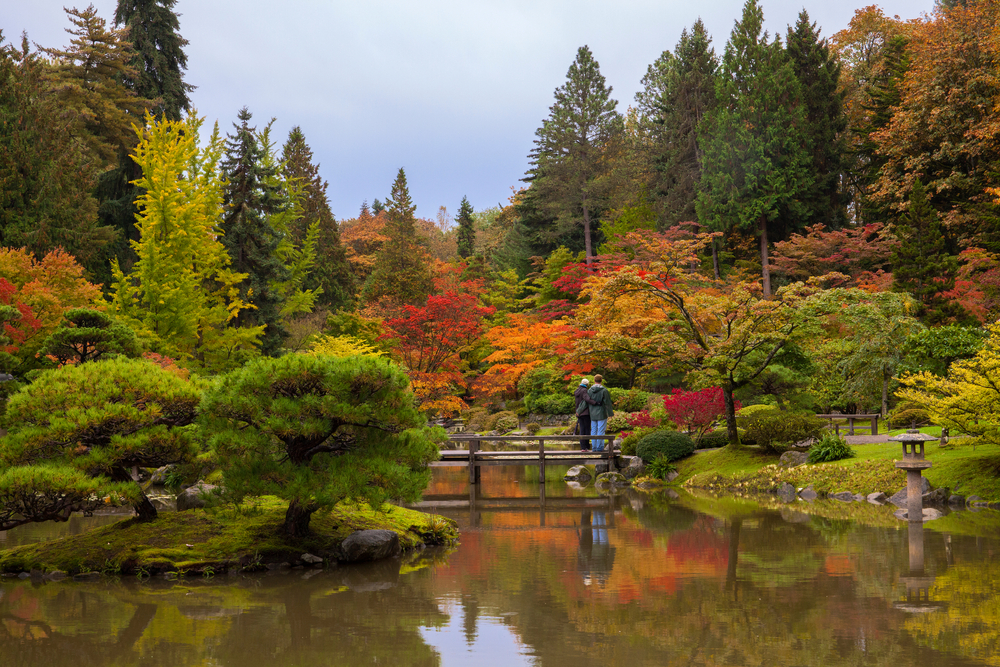How In Japan, Trees Are Often Moved (Not Removed) To Make Way For Roads

In a world where construction often steamrolls over whatever stands in its path, there’s a quiet but powerful exception taking root in Japan. Picture this: instead of felling a massive tree to clear space for a new road or building, a team of specialists arrives—not with chainsaws, but with straw, cranes, and centuries-old wisdom. The goal isn’t destruction—it’s relocation.
This isn’t just about saving trees. It’s a reflection of an entire cultural mindset—one that asks: Can progress and preservation grow side by side? The answer, in Japan, is often yes. But how they manage to do it—both physically and philosophically—might surprise you.
How Japan Moves Massive Trees
Moving a 70-ton tree isn’t exactly a weekend landscaping project. It’s an engineering and emotional undertaking that blends modern machinery with ancient precision. In Japan, when a mature tree stands in the way of development, specialists don’t ask how quickly it can be removed—they ask how carefully it can be moved.
The process begins long before a single root is touched. Arborists assess the tree’s health, taking into account age, size, and species. Then comes Nemawashi, a meticulous preparation stage that literally means “digging around the roots.” This isn’t done in a rush—it can take months. Workers slowly loosen the soil and trim the roots in stages, allowing the tree to adapt and reducing transplant shock.
When the tree is ready, cranes, wooden rollers, or inflatable platforms may be used to lift and move it. In some cases—like the famous camphor tree in Minato-ku—traditional wooden beams and tracks are laid, and teams of up to 70 workers move the tree just meters at a time, using ancient techniques passed down through generations. Even the rollers have names: Kanzashi for the front, Okagura for the back—terms usually reserved for sacred festival floats.
Once the tree reaches its new location, a specially prepared mound awaits. Workers ensure that not even a stray stone will block the tree’s re-rooting process. And the care doesn’t stop there—after the move, the tree is monitored, watered, fertilized, and encouraged to thrive, as though it had never been disturbed.
In Japan, this isn’t just arboriculture. It’s choreography. And it reflects a deep-seated belief: if something has taken decades—or even centuries—to grow, it deserves more than a moment to be moved.
Cultural and Spiritual Roots

The act of relocating a tree in Japan isn’t just a feat of engineering—it’s an expression of reverence. While other nations may view trees as mere landscaping elements, Japan sees them as living companions, sometimes even spiritual beings. This belief is deeply rooted in the country’s Shinto traditions, where ancient trees are thought to house kami, or divine spirits. Cutting one down isn’t just environmental—it’s existential.
This cultural mindset helps explain why Japan invests so heavily—financially, emotionally, and physically—in tree relocation. It’s not only about preserving greenery but protecting what is considered sacred. In a society that bows to shrines and celebrates the cherry blossom season with near-religious devotion, it makes sense that trees are not seen as obstacles, but elders deserving of care.
Even in urban settings like Tokyo, where land is precious and space is limited, these values persist. Projects must often consult environmental experts, community leaders, and sometimes spiritual advisors before making decisions about ancient trees. And when a tree must be moved, the process is handled with near-ritualistic attention—right down to wrapping the roots in straw as a protective gesture.
What might seem overly ceremonial to outsiders is, in truth, a reflection of Japan’s holistic worldview: that progress shouldn’t come at the cost of soul. In this light, moving a tree becomes an act of cultural integrity—a small, symbolic resistance against the idea that everything is disposable in the name of advancement.
Nemawashi: Digging Around the Roots
In Japan, moving a tree begins with a process called Nemawashi—a word that, on the surface, refers to carefully digging around the roots to prepare for transplanting. But over time, it has grown into something much bigger: a metaphor for thoughtful, collaborative change.
Literally, Nemawashi involves loosening the soil and trimming the roots slowly over time so the tree can survive the move. Some even go so far as to place soil from the new location around the roots in advance, helping the tree acclimate before it ever leaves its home. The message is clear: don’t yank. Prepare with care.
Figuratively, Nemawashi has found a home in Japanese organizational culture, particularly at companies like Toyota. It represents a philosophy of building consensus before making big decisions. Leaders don’t impose change from the top—they walk the halls, have informal conversations, listen to concerns, and slowly cultivate agreement. By the time a proposal is formally presented, the groundwork has already been laid. Much like the tree, people are more likely to thrive when they’re prepared, involved, and treated with respect.
In an age where “move fast and break things” is often the motto, Nemawashi is a reminder that sustainable change—whether it involves trees, people, or institutions—requires patience and presence. It teaches us that sometimes, the most radical thing you can do is slow down and dig deeper.
Marrying Tradition with Technology

Japan’s approach to tree relocation is a masterclass in balance—not just between nature and progress, but between old-world wisdom and cutting-edge tools. While the rituals and respect are rooted in centuries-old practices, the logistics have evolved with the times. Tradition guides the “why”; technology refines the “how.”
Take the example of Tokyo’s recent urban redevelopment projects. In areas like Jingu Gaien, large-scale relocation efforts were scrutinized by environmentalists, architects, and community leaders alike. The outcome? A revised plan that reduced tree removals and expanded green space—even repositioning an entire baseball stadium to give ancient ginkgo trees more breathing room. But the real story lies in how it was executed.
To move these massive trees safely, modern arborists employ GPS tracking, 3D modeling, and tree health monitoring systems that analyze everything from root density to soil composition. Specialized cranes perform the heavy lifting, while inflatable rollers and shock-absorbing platforms reduce stress on the trees during transport. Even artificial intelligence is being tested to optimize future relocations—mapping risk zones, suggesting timing windows, and predicting transplant success rates.
It’s not a rejection of the old ways, but a partnership. The spiritual care of Nemawashi meets the precision of satellite imaging. Straw wrappings are paired with digital diagnostics. This unique fusion allows Japan to preserve its urban forests while making room for the future—a model of sustainability that doesn’t compromise soul for speed.
The Hidden Benefits of Tree Relocation

At first glance, moving a tree might seem like an act of preservation for preservation’s sake—a gesture of goodwill toward nature. But dig a little deeper (pun intended), and the benefits reveal themselves as far more layered. In Japan, tree relocation isn’t just about sentiment; it’s a smart ecological and social investment.
From an environmental standpoint, relocating trees helps cities retain mature greenery that would otherwise take decades to regrow. These old trees provide critical benefits: they sequester carbon, reduce urban heat island effects, prevent soil erosion, and support biodiversity. Unlike saplings, mature trees instantly deliver shade, habitat, and air purification—essential services in increasingly dense and warming cities.
Then there’s the social impact. Trees aren’t just part of the landscape—they’re part of the memoryscape. That towering camphor or ginkgo might be a child’s first climbing tree, a landmark for a local gathering spot, or the silent witness to generations of neighborhood stories. Keeping those living monuments intact reinforces community identity and continuity, even as the skyline changes.
There’s also something quietly profound about the symbolism. In a time when progress often means razing and replacing, the choice to relocate—to protect, adapt, and nourish—sends a powerful message. It tells citizens, “We value what came before. We’re not here to erase the past, but to bring it with us.”
Lessons for Life and Leadership

At its core, the Japanese approach tells us this: real transformation doesn’t happen by force. You can’t just yank things out of place and expect everything to keep working. Whether it’s a 70-ton camphor tree or a long-serving team member in an evolving organization, roots matter. Disrupt them too quickly, and the damage might be irreversible. But prepare the soil, tend to the roots, and even a massive shift can lead to new growth.
Leadership, like tree relocation, is about foresight and patience. It’s understanding the terrain—past, present, and future—and working with it, not against it. It’s listening to the people who will be most affected, shaping consensus before mandates. It’s knowing when to bring in tools and when to simply show up and pay attention.
Even on a personal level, the lesson holds. When faced with change—whether a career move, a life transition, or emotional upheaval—we often think we have to uproot everything at once. But maybe the wiser approach is Nemawashi: slowly preparing ourselves, nourishing our foundations, and only then making the move.
Tips for Embracing Sustainable Change

Change doesn’t have to be disruptive or destructive. Whether you’re leading a team, navigating a personal shift, or working within a community, here are practical (and philosophical) tips inspired by Japan’s mindful approach to tree relocation:
1. Prepare the Roots Before the Move
Just like a tree needs time to adjust before it’s transplanted, people need time to adapt to change. Start by identifying what supports you—skills, routines, relationships—and begin strengthening them before making a big leap.
2. Don’t Rush the Process
In Japan, it can take months to move a tree just a few meters. The same goes for meaningful transitions. Real, lasting change takes time. Rushing may get you somewhere faster, but it often leads to breakdowns later.
3. Communicate Early and Often
Nemawashi in organizations means having informal conversations long before decisions are finalized. It’s about building trust, listening, and shaping consensus. The more you talk before the move, the smoother the transition.
4. Blend Old Wisdom with New Tools
Honor traditions and past lessons, but don’t be afraid to use modern solutions. Whether it’s project planning software or self-reflection journals, the right tools can make transitions more effective without losing the soul of the journey.
5. Respect What Came Before
Don’t treat people or processes as obstacles. Like ancient trees, they often hold the memory and structure of what works. Find ways to honor that legacy even as you evolve.
6. Monitor and Support Post-Move
Just like relocated trees need care after the move, so do people and systems. Offer follow-up support, check in often, and make adjustments as needed. Change isn’t over once the shift happens—it’s just begun.
7. Make Room for Growth
Change isn’t just about survival—it’s about flourishing. Whether it’s a tree in a new park or a person in a new role, create environments where continued growth is possible.
8. Embrace the Symbolism
Let change be more than logistical—let it be meaningful. When done right, transitions can remind us of who we are, what we value, and what kind of future we’re shaping.
A Different Kind of Progress
The story of Japan’s tree relocation practices isn’t just about preserving nature—it’s about preserving meaning. In a world increasingly obsessed with speed and efficiency, Japan offers a counterpoint: a way of moving forward that doesn’t bulldoze the past. A philosophy that says, yes, we can grow—but let’s not forget to take our roots with us.
By treating trees not as problems to be removed but as living legacies to be moved, Japan reminds us that real progress doesn’t come from tearing things down—it comes from careful planning, deep respect, and the courage to do things the slow, deliberate way. And perhaps that’s the lesson for all of us navigating change: the path ahead isn’t just about where we’re going, but how we get there—and who or what we choose to bring along.
Whether it’s trees, traditions, or people, the principle remains the same: don’t just make space. Make space with care.
Featured Image source: Shutterstock
Loading...






